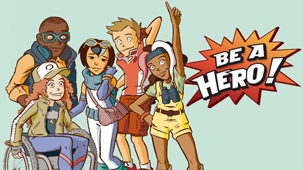
Children and DisastersAfter a disaster, children may be affected in a variety of ways, including their short- and long-term functioning, psychosocial adjustment, health, and their developmental trajectory. Children often have different needs before, during, and after disasters. After Hurricane Katrina, disaster response experts recognized that the unique needs children have had been overlooked in federal and state disaster planning (Save the Children). Children are a vulnerable group that make up 25 percent of the nation, and it is vital to be prepared ahead of a disaster to help limit the risk of children’s separation from their families, and to speed up recovery. This issue of The Dialogue from the SAMHSA Disaster Technical Assistance Center (DTAC) highlights the important process of helping children prepare for and cope with their reactions to disasters. A variety of preparedness and recovery resources are offered to better help parents, caregivers, and disaster behavioral health professionals. Additionally, several programs are discussed that can help inspire your community to help children better prepare for and recover after a disaster. Has your program had success reaching out to children? Do you have suggestions or lessons learned from your experiences? Please email your experiences or recommendations to us at dtac@samhsa.hhs.gov. We’ll print selected reader comments in a future issue of The Dialogue. | ||||||||||||
Recommended ResourcesThis tip sheet from SAMHSA covers possible reactions that children ranging from infancy to age 19 might have to a disaster or traumatic event; how you can best support and comfort them; and how you can know when it’s time to get outside help. Learn more about how paying attention, allowing children to ask questions, and being a good model of self-care can benefit the children in your life after a disaster. This guide from SAMHSA was developed for anyone working with children after a disaster. It walks through common reactions children may display after a traumatic event and steps that can be taken in the process of supporting them. The guide also shares several stories that show children reacting after a disaster. They demonstrate how anxiety, disruptive behavior, and other emotions can display themselves and how you can help. This page from Ready.gov informs parents trying to properly care for their children after a disaster. It details several ways you can help make disasters less traumatic and shares a list of frequently asked questions from parents with children of a range of ages. It answers in detail the best ways to approach different emotions and reactions after various disasters. This tip sheet from the National Child Traumatic Stress Network helps parents, schools, and communities develop a better understanding of how children of various ages may react to a traumatic event. Preschool children, school-age children, and adolescents can each be supported in a variety of ways to promote their emotional recovery after a disaster or traumatic event. About The DialogueThe Dialogue, a quarterly technical assistance journal, is an arena for professionals in the disaster behavioral health field to share information, resources, trends, solutions to problems, and accomplishments. Read previous issues of The Dialogue. The views, opinions, and content expressed in this publication do not necessarily reflect the views, opinions, or policies of the Center for Mental Health Services (CMHS), the Substance Abuse and Mental Health Services Administration (SAMHSA), or the U.S. Department of Health and Human Services (HHS). |

























.png)









No hay comentarios:
Publicar un comentario